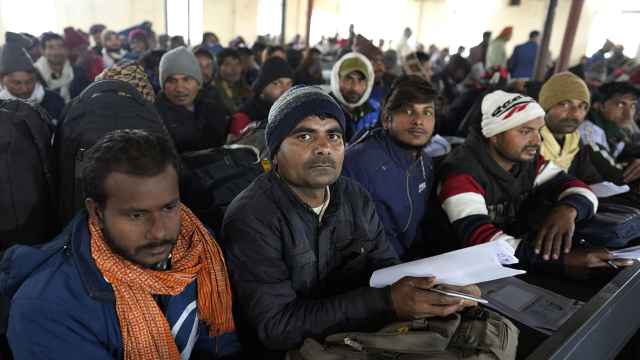It is not well known that Kazakhstan, a nation whose landmass exceeds that of Western Europe and boasts the largest economy in Central Asia, introduced a carbon trading scheme earlier this year. It is the first Asian nation to take on an economy-wide cap, and the trading system has been designed to help it achieve its goal of reducing greenhouse gas emissions to 7 percent below 1990 levels by 2020.
Indonesia is also considering carbon trading, and in 2014 Thailand will introduce a voluntary emissions trading system, likely to be a precursor to a mandatory scheme. These developments follow hot on the heels of the landmark passage in May 2012 of a South Korean law that introduces a carbon trading scheme in 2015.
Kazakhstan, Thailand and South Korea are only the latest in a growing list of Asia-Pacific nations to embrace carbon trading. Collectively, with China and countries like New Zealand, they represent the emergence of a nascent Asia-Pacific carbon trading hub with potential to be a tipping point in the fight against climate change.
South Korea's move is particularly significant because it helps unblock what has been a barrier to progressing development of an Asian response to climate change — that is, competitiveness concerns in the manufacturing heart of the global economy.
South Korea's economy is, in numerous ways, in competition with China and Japan. Many voices in Seoul pressed the government to drop its plans for an emissions trading system until Beijing and Tokyo followed suit. Both China and Japan have in the past voiced competitiveness concerns vis-a-vis their neighbors as a barrier to introducing their own schemes.
South Korea's move was, therefore, a bold one, but it is not as risky as it might seem.
Seoul knows that China's 12th five-year plan, which runs until 2015, contains specific mention of carbon trading as a mechanism that could help the country reach its current national target of reducing by 2020 the carbon intensity of gross domestic product by between 40 and 45 percent from 2005 levels. The Chinese government announced in 2011 that pilot carbon trading schemes would be introduced in Beijing, Chongqing, Shanghai, Shenzhen and Tianjin, Guangdong and Hubei. These are not token efforts. Combined GDP of these Chinese cities, municipalities and provinces is equivalent to Canada's and, if successful, the pilots could be precursors to a national scheme by 2020.
China's motivations here are complex. First, it recognizes that to maintain social cohesion, its growth must be sustainable. As China grows wealthier, environmental concerns are rising, and China is vulnerable to some of the worst impacts of climate change.
The 12th five-year plan was the greenest ever, and this was reinforced by the outcome of the Communist Party's recent Third Plenum of the 18th Congress, a meeting which traditionally sets the tone for the Chinese government's next five-year term, which placed environmental and sustainable growth at the heart of the country's priorities.
Second, China knows that the command-and-control policies they have used to date will not stimulate innovation or encourage enterprise. At the same time, however, emissions trading has the benefit of a regulatory underpinning combined with the flexibility of a market, which creates a financial incentive to develop innovative ways to reduce emissions. China has learned from its experiences in the Clean Development Mechanism that markets can uncover low cost emissions savings and stimulate the creation of new businesses.
Finally, in international United Nations climate negotiations, China is expected to take on an emissions reduction target under a post-2020 framework. The existence of a domestic emission trading policy will be a great asset, enabling Beijing to sign up to targets confident that it can meet them at least cost. South Korea's decision should embolden these efforts.
As the China example underlines, at the heart of all these promising developments in Asia-Pacific is a growing realization that carbon trading is the most economically efficient way to reduce emissions of greenhouse gases. The larger the Asia-Pacific emissions market that emerges, the more efficient its operation, the more solutions will be found and the lower the cost.
In time, this nascent regional scheme could be linked with the largest existing carbon trading system in the world in the EU. In fact, if the EU wants to maintain the lead in carbon trading, it will need to up its game and implement the urgent reforms necessary to ensure the EU emissions trading system operates effectively.
It is not too much of a leap to envisage a truly global market by 2020, involving the EU and Asia-Pacific, combined with state-level schemes in California, on the U.S. east coast and in Quebec, perhaps covering as much as 50 percent of global emissions.
Such a development would be a step change in the global fight against climate change. Moreover, as costs of reducing emissions are revealed to be lower than first feared and as benefits are progressively realized in terms of greater resource efficiency, governments are likely to commit further in the UN climate negotiations.
The ultimate goal is as urgent as it is complex: to design and agree a global regime after 2020 with the necessary ambition to limit the global average temperature rise to 2 degrees Celsius. Asia's efforts will be crucial to making this a reality.
Terry Townshend is head of policy at London-based Global Legislators Organization (GLOBE International), an international organization comprising national parliamentarians from more than 70 countries committed to finding solutions to problems posed by climate change and sustainable development.
A Message from The Moscow Times:
Dear readers,
We are facing unprecedented challenges. Russia's Prosecutor General's Office has designated The Moscow Times as an "undesirable" organization, criminalizing our work and putting our staff at risk of prosecution. This follows our earlier unjust labeling as a "foreign agent."
These actions are direct attempts to silence independent journalism in Russia. The authorities claim our work "discredits the decisions of the Russian leadership." We see things differently: we strive to provide accurate, unbiased reporting on Russia.
We, the journalists of The Moscow Times, refuse to be silenced. But to continue our work, we need your help.
Your support, no matter how small, makes a world of difference. If you can, please support us monthly starting from just $2. It's quick to set up, and every contribution makes a significant impact.
By supporting The Moscow Times, you're defending open, independent journalism in the face of repression. Thank you for standing with us.
Remind me later.






